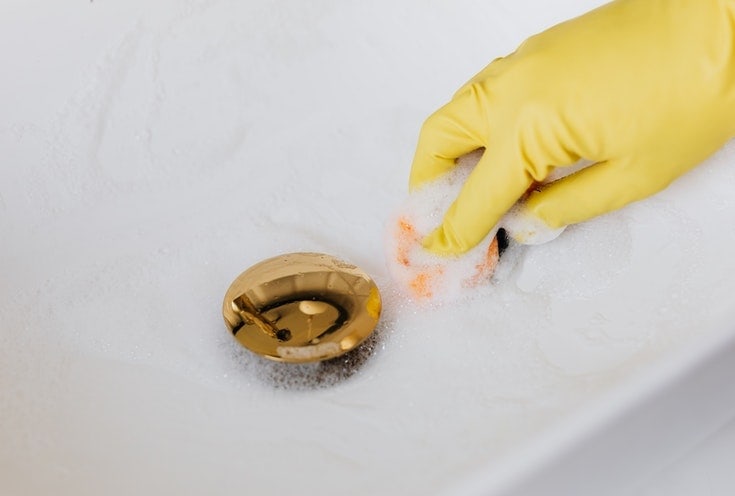Why Does My Bathroom Sink Smell? Fixes & FAQs
-
Codee Chessher
- Last updated:

Kitchen sinks are more prone to foul odors, but bathroom sinks can develop them too. Most foul odors are produced by bacteria that feed on organic matter in the drain, like food and grease. In the bathroom, the most common culprit is hair lingering in the drain. Bacteria flock to the hair and reproduce, which causes odors that can resemble sewage.
Fortunately, fixing a smelly bathroom sink is fairly simple in most cases. Let’s check out what you need and how to go about it.
How to Fix a Stinky Bathroom Sink
The first course of action is to boil a gallon of water and then pour it directly down the drain. Immediately after, pour an equal amount of cold water down the drain. In many cases, this will be enough to wash away any organic matter and bacteria in the drain. The hot water will liquefy and wash away any grease or oil, then the cold water will congeal it.
If that doesn’t do the trick, more drastic measures may be necessary. Put a plunger over the drain and vigorously pump the plunger for a minute or two to free any blocked or stuck debris in the drain. After that, pour hot water down the drain.
If you’ve tried all of this and your bad odor persists, pour a half cup of undiluted white vinegar down the drain. The acetic acid in the vinegar should break down anything that’s still lingering down there.

Can I Clean My Bathroom Sink With Bleach?
Bleach is a favorite household cleaner because of its corrosive properties, but using it to clean your stinky sink is risky. Bleach can react with household cleaners, your pipes, and the material in your drain, potentially releasing toxic fumes. It does destroy virtually all bacteria that can cause foul odors, but it may react in unforeseen ways.
If you’re determined to use bleach to fix your stinky drain, mix a half cup of bleach with a half cup of hot water, then pour the mixture down your drain. Within a few minutes, your bad odor should be gone. If it isn’t, you may have a solid blockage somewhere in your pipes. Keep in mind that you should always open up a lot of windows and keep the area well ventilated when working with bleach. You should also wear protective clothing to prevent any burns.

What Should You Do if Nothing Else Worked?
If none of the methods above fixed your problem, you should be checking your pipes. The U-bend or waste trap underneath your sink is typically filled with water to prevent drain odors from rising into your sink, but it can get blocked up with hair, oil, grease, or any manner of products or materials.
Turn your toilet’s water off and remove your U-bend using an adjustable wrench while the excess water empties into a bucket. Keep the bucket in place below the sink and flush the drain with hot water or vinegar again. If you want to go the extra mile, you can use a long-handled brush to reach into the pipes and clean them.
Conclusion
Bathroom sinks can get clogged with matter that attracts bacteria, which causes malodorous smells. Using a few household chemicals should fix your problem, but if not, you may have a blockage in your U-bend. If you’ve tried everything you could, it never hurts to call a plumber and get a professional’s opinion.
Featured Image Credit: Brett_Hondow, Pixabay
Contents

